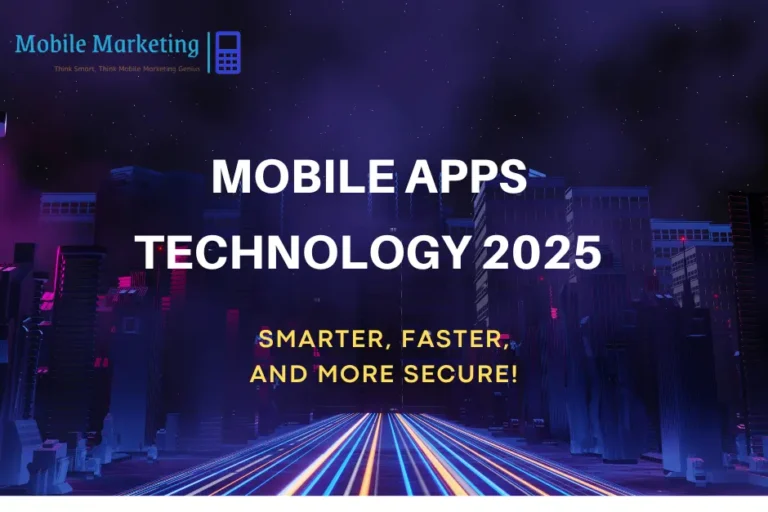Mobile Gaming Trends: Exciting Immersive Experiences and Beyond

In the past decade, the mobile gaming industry has witnessed unparalleled growth, transforming from a casual pastime into a global entertainment juggernaut. As technology evolves, the boundaries of what mobile gaming can offer are expanding, with innovations like augmented reality (AR), virtual reality (VR), and cloud gaming reshaping how we engage with games. This article delves into the latest mobile gaming trends, exploring how cutting-edge advancements are crafting the future of the industry.
Table of Contents
1. Introduction to Mobile Gaming Trends
The gaming industry, particularly mobile gaming, has transformed drastically over the years. According to industry reports, mobile gaming accounts for nearly half of the global gaming market, and its growth trajectory shows no signs of slowing. The rise of smartphones and the integration of powerful processors and graphics have led to an era where mobile games offer immersive experiences rivaling those of traditional consoles.
These mobile gaming trends are not merely incremental advancements but rather seismic shifts driven by emerging technologies. From AR and VR to cloud gaming and the widespread adoption of 5G networks, let’s explore what’s shaping the future of mobile gaming.

2. The Role of Augmented Reality (AR) in Mobile Gaming
Augmented Reality Games: A New Dimension
Augmented reality has become one of the most talked-about technologies in the mobile gaming space. By superimposing digital elements onto the real world, AR creates a unique, immersive experience for players. Perhaps the most iconic example of AR in mobile gaming is Pokémon GO, a game that took the world by storm in 2016. Players were able to explore their real-world surroundings while capturing virtual Pokémon, merging the physical and digital realms in an unprecedented way.
Other augmented reality games like Harry Potter: Wizards Unite and Minecraft Earth have further demonstrated AR’s potential to change how we interact with games. The allure of AR lies in its ability to make gameplay more interactive and socially engaging, encouraging players to step out into the world and become part of their environment.
Emerging AR Technologies
As AR technology advances, developers are exploring new ways to make gameplay even more engaging. For example, AR glasses and headsets are emerging, offering hands-free and more immersive experiences. These innovations hint at a future where AR games could become more sophisticated and seamlessly integrated into our daily lives.
However, challenges remain. The success of AR games often depends on the accuracy of geolocation technology and the quality of a device’s camera and sensors. As these technologies improve, we can expect a surge in high-quality AR mobile games.
3. Virtual Reality Mobile Games: Pushing the Boundaries of Immersion
VR’s Entry into the Mobile Gaming World
While AR overlays the digital world onto our physical surroundings, virtual reality mobile games transport players into entirely virtual environments. VR’s journey into mobile gaming has been relatively slow compared to AR, primarily due to hardware limitations. However, advancements in mobile VR headsets and improved processing power are changing the landscape.
Devices like the Oculus Quest and Samsung Gear VR have laid the groundwork for mobile VR gaming, and newer technologies are making these experiences more accessible. Players can now dive into fully immersive worlds without needing a high-end gaming PC or console.
The Potential of VR Gaming on Mobile Devices
Although VR gaming has yet to achieve mainstream adoption on mobile platforms, its potential remains immense. VR mobile games like End Space and VR Noir demonstrate how immersive storytelling and gameplay can transform the mobile gaming experience. Developers are also experimenting with integrating haptic feedback and motion tracking to enhance realism.
However, widespread adoption of mobile VR gaming will depend on continued advancements in smartphone technology, including higher resolution displays, more efficient processors, and better battery life.

4. Cloud Gaming on Mobile: The Game-Changer
Understanding Cloud Gaming on Mobile
Cloud gaming is another revolutionary concept that has the potential to change the gaming industry as we know it. With cloud gaming on mobile, players can stream high-quality games directly to their devices without needing powerful hardware. This technology leverages cloud servers to handle the heavy lifting, enabling gamers to play AAA titles on their smartphones.
Platforms like Google Stadia, Xbox Cloud Gaming, and NVIDIA GeForce NOW have already made significant strides in this space. Cloud gaming has democratized access to high-quality games, making them available to anyone with a stable internet connection.
Advantages and Challenges
The primary advantage of cloud gaming is accessibility. Players no longer need to invest in expensive gaming consoles or PCs. Instead, they can enjoy a seamless gaming experience on their mobile devices. Additionally, cloud gaming allows for instant updates and cross-platform play, further enhancing its appeal.
However, challenges persist. A robust and stable internet connection is crucial for a lag-free experience, which can be a barrier for players in regions with limited connectivity. Moreover, data consumption is a concern, as streaming games can quickly exhaust data limits.
5. 5G Impact on Mobile Gaming: A Catalyst for Innovation
How 5G Enhances Mobile Gaming
The introduction of 5G networks has been a game-changer for the mobile gaming industry. With its ultra-fast speeds, low latency, and high bandwidth, 5G enables a smoother and more responsive gaming experience. 5G impact on mobile gaming is profound, especially for technologies like AR, VR, and cloud gaming, which require high data transfer rates.
For instance, cloud gaming services benefit immensely from 5G, as players can stream games without buffering or latency issues. Similarly, AR and VR experiences become more seamless, with real-time data processing and minimal lag. Developers are also exploring the possibilities of multiplayer AR and VR games that leverage 5G’s capabilities.
Potential Future Developments with 5G
With 5G networks becoming more widespread, we can expect a new era of mobile gaming innovations. Concepts like real-time augmented reality multiplayer games, ultra-high-definition graphics, and immersive VR experiences will become commonplace. Additionally, the convergence of AI and 5G could lead to smarter game mechanics and more personalized gaming experiences.
6. Mobile Game Development: Navigating New Frontiers
The Evolution of Mobile Game Development
The field of mobile game development has evolved significantly, driven by advancements in software and hardware. Developers now have access to powerful tools and frameworks that make it easier to create visually stunning and feature-rich games. The integration of AI and machine learning into game development has also led to smarter NPCs (non-playable characters) and adaptive gameplay.
Game engines like Unity and Unreal Engine have played a pivotal role in shaping mobile game development. These engines offer developers the flexibility to create both 2D and 3D games with ease. Moreover, the rise of procedural generation in game design allows for more dynamic and unpredictable gameplay, enhancing replayability.
The Future of Mobile Game Development
As technology continues to advance, the future of mobile game development looks promising. Developers are exploring ways to leverage emerging technologies like blockchain for secure in-game transactions and NFTs (non-fungible tokens) for unique digital assets. Additionally, the integration of cross-platform play is becoming more common, allowing players to enjoy their favorite games on multiple devices.
7. Gaming Technology Trends to Watch
Artificial Intelligence (AI) in Mobile Gaming
AI is revolutionizing the gaming industry, and gaming technology trends indicate that its influence will only grow. In mobile gaming, AI is used to create more intelligent and adaptive game mechanics. For instance, AI-driven NPCs can learn from player behavior and adapt their strategies accordingly, providing a more challenging and engaging experience.
Moreover, AI is being used to optimize in-game economies and personalize content for players. Machine learning algorithms can analyze player data to deliver tailored in-game recommendations, enhancing user engagement.
The Rise of Social and Collaborative Gaming
Another trend shaping the future of mobile gaming is the rise of social and collaborative experiences. Multiplayer mobile games like Among Us and PUBG Mobile have demonstrated the power of social interaction in gaming. As connectivity improves, we can expect more games that emphasize teamwork and real-time communication.
8. AR and VR Advancements: What’s Next?
The Convergence of AR and VR
As we move forward, the lines between AR and VR are beginning to blur. Developers are experimenting with mixed reality experiences that combine elements of both AR and VR. For instance, future mobile games might allow players to transition seamlessly between augmented and virtual worlds, creating a more cohesive and immersive experience.
Hardware and Software Innovations
AR and VR advancements are also being driven by improvements in hardware. Lightweight, wireless headsets and more powerful mobile devices are making it easier to experience these technologies on the go. Additionally, software advancements, such as real-time rendering and improved tracking algorithms, are enhancing the realism of AR and VR games.
9. Popular Games and New Releases Shaping the Industry
Top Mobile Games Pushing the Envelope
Several games are at the forefront of these mobile gaming innovations. Titles like Call of Duty: Mobile and Genshin Impact have set new standards for graphics and gameplay on mobile platforms. Meanwhile, new releases continue to push the envelope, incorporating features like ray tracing and adaptive frame rates.
The industry is also seeing a rise in narrative-driven games that offer deep, immersive storytelling. Games like Florence and Sky: Children of the Light have shown that mobile gaming can be just as emotionally impactful as console and PC gaming.
10. The Future of Mobile Gaming: Predictions and Possibilities
Immersive and Personalized Experiences
Looking ahead, the future of mobile gaming will likely focus on creating more personalized and immersive experiences. AI-driven content customization, real-time multiplayer games, and interactive storylines will become more prevalent. Players can expect games that adapt to their preferences and playstyles, offering a truly unique experience.
The Role of Emerging Technologies
Emerging technologies like holographic displays and brain-computer interfaces could redefine how we interact with mobile games. Imagine controlling a game with your thoughts or experiencing a holographic battle right in your living room. While these concepts might sound like science fiction, advancements in neuroscience and display technology are making them a plausible reality.
11. Conclusion
Mobile gaming is on the cusp of a new era, driven by mobile gaming trends like AR, VR, cloud gaming, and the rollout of 5G networks. As technology continues to evolve, the possibilities for mobile gaming are limitless. The future promises more immersive, engaging, and socially connected experiences, forever changing how we play and interact with games.
Whether you’re a casual gamer or a hardcore enthusiast, one thing is clear: the world of mobile gaming is only just beginning to reveal its true potential.







3 Comments
Comments are closed.